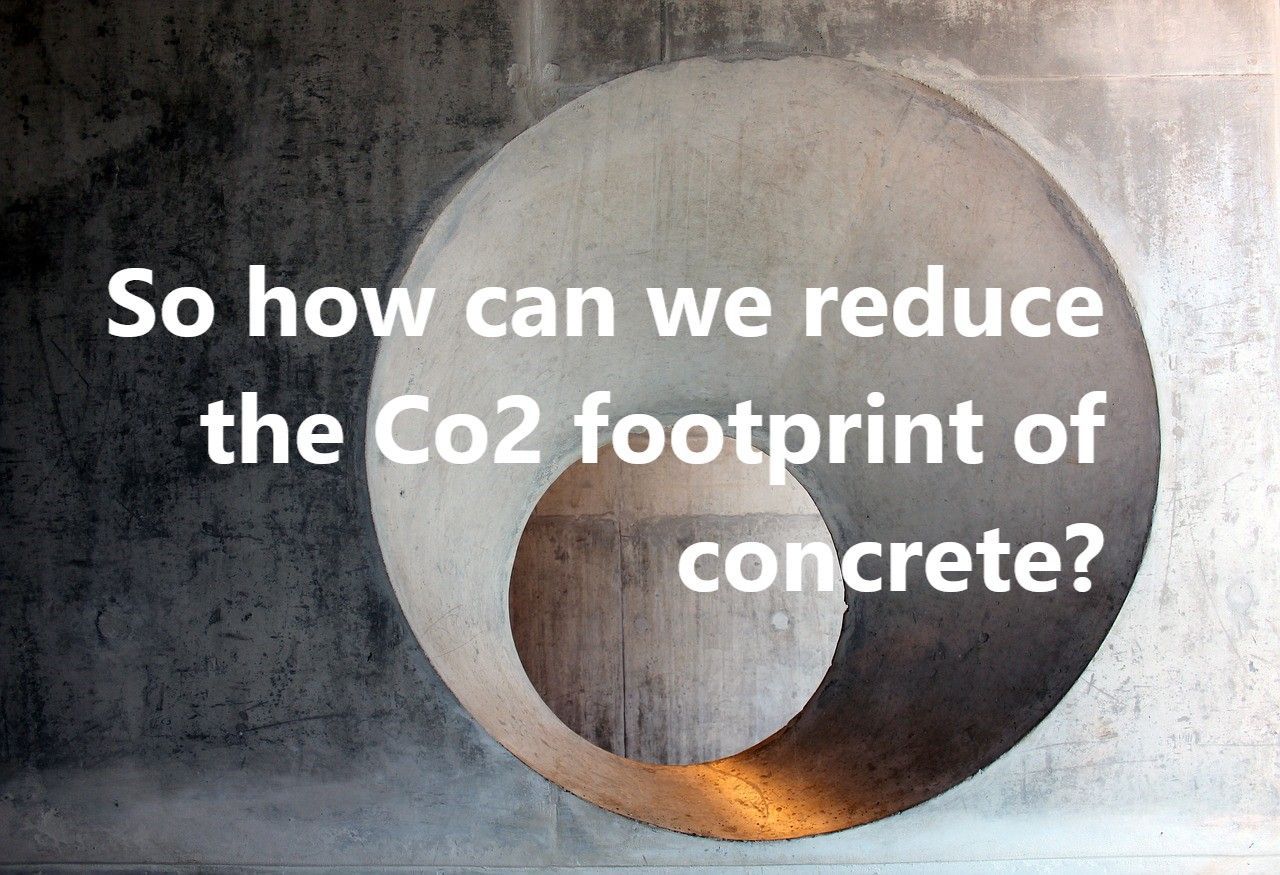Introduction
– what is embodied carbon?
– why should this
be our concern?
Credit: “Co2” by Pete Linforth from Pixabay
Around 40% of global warming worldwide is produced by one industry. It’s not the oil and gas industry either, that is the biggest cause and we are all aware of the efforts being made to phase out fossil fuels completely. Around 40% of worldwide global warming emanates from the construction industry and it also produces more waste than any other industrial sector.
Why is this? Surely we are now building well-insulated, energy-efficient buildings and incorporating alternative sources of green energy into our designs? The answer is yes, although there is much work to be done but there is a hidden factor. Most of this 40% figure is not produced from buildings in their operational phase, i.e. the power required for heating, light, ventilation, etc., it is actually produced in the construction phase, as ‘embodied’, ‘embedded’ or ‘upfront’ carbon. This is hidden, and more difficult to pin down and therefore quantify than operational carbon, yet it poses a serious problem in terms of global warming.
The structure of a building, or bridge or tunnel for that matter, for example, can represent 50% of embodied carbon. As called for in the Paris Agreement, emissions need to be reduced to 45% by 2030 and reach net zero by 2050.
In this blog article I am going to look at just a few ways in architects and the construction sector in general are responding to this pressing problem, and I'll include examples from translation projects I have worked on. I'll take a look at specific materials which produce large amounts of CO2, how careful planning of buildings can reduce embodied carbon, the important role of recycling and reclaiming materials from existing buildings, and ideas that challenge whether we actually have to build new buildings in the first place. I am in no doubt that I will return to this ever-expanding complex topic in future.
Why am I highlighting this topic?
It might seem a bit technical and obscure, boring even, and something that should be left to those who make buildings, build bridges, excavate tunnels, etc. Us lay persons are not qualified enough to question any of the decision-making that goes into these highly complex projects.
However, the construction sector is responsible for around 40% of carbon emissions on our planet. Furthermore, we all use buildings - they give us spaces in which we work, live and play. So collectively, we create a demand for buildings and therefore Co2 emissions. Once we have some facts and examples, we can all become more actively involved in the process, by lobbying local authorities, raising awareness in general to avoid poor decisions in the early planning stages of a building which have a big long-term impact its carbon footprint. Developers and local authorities and the like need to be accountable to subsequent users of the buildings. We should be asking what efforts are being made to reduce carbon output in the making of the school, library, multi-storey office building, for example? Many potential employees of companies are now starting to turn down jobs at companies occupying buildings with poor environmental credentials, so awareness is increasing. Commercial pressure can therefore be brought to bear on construction firms and developers by highlighting poor environmental decisions. Given sufficient awareness, people will literally vote with their feet.
Concrete - beauty and the beast
Translation case study - CERN Future Circular Collider
Translation case study – hybrid construction
DafStb guideline - Smarter design for less CO2 emissions
It is hard to imagine a world without concrete, simply because it is an incredibly versatile, strong material with a high compressive strength. When combined with structural steel it can perform incredible engineering feats. It holds up our buildings, bridges and tunnels, and the aesthetics of concrete are also often used in buildings and outdoors to dramatic effect.
On the other hand, large amounts of CO2 are also produced when manufacturing concrete, which involves mixing aggregates with cement and hydration (adding water).
Inside Climate News gave us some depressing statistics in its article "Concrete is Worse for the Climate Than Flying." [8], including:
- Between 2002 and 2021 the industry's carbon footprint doubled from 1.4 bn to nearly 2.9 bn tons of Co2.
- This has received very little public scrutiny despite contributing nearly three times as much to global warming as the airline industry.
The cement industry is one of the two largest producers of carbon dioxide (CO2), creating up to 5% of worldwide man-made emissions of this gas, of which 50% is from the chemical process and 40% from burning fuel. The CO2 produced to make structural concrete (using ~14% cement) is estimated at 410 kg/m3. The CO2 emitted during concrete production is directly proportional to the cement content used in the concrete mix; 900 kg of CO2 are emitted for every ton of cement, which accounts for 88% of the emissions associated with the average concrete mix [1].
To make cement, powdered limestone is heated and combined with a variety of components, to produce an intermediary product called clinker. Forty per cent of the weight of limestone is CO2, which is released during this process [2].

Credit: “Concrete architecture” by Maike und Björn Bröskamp from Pixabay
Clinker substitution
In 2022, I translated an article about the CERN Future Circular Collider, a 91 km long tunnel connected to the existing Large Hadron Collider particle accelerator complex. This article focussed on possible ways of using the huge quantity of tunnel spoil produced, which would otherwise be consigned to landfill. One of the proposals was to upgrade a clay fraction of the soil to obtain activated clays which can subsequently be used to manufacture low-carbon cement.
Design concrete out of buildings
One way of reducing CO2 emissions during the construction of buildings is simply to use less concrete. This does not just come down to structural design, it can also be addressed at the design and planning stage.
From an environmental standpoint, the argument for making buildings lighter without compromising on structural integrity and strength is powerful, because this reduces the quantity of concrete that goes into the foundations, as there is less overall weight to be supported.
I recently translated a case study about a high-rise apartment building (21 storeys) manufactured using timber hybrid construction. The floors and walls were made of prefabricated concrete and timber elements. The almost diametrically opposed structural properties of the two materials were utilised to maximum effect when combined. Concrete is heavier but has excellent fire resistance and compressive strength, while timber is much lighter and has excellent tensile strength. Using hybrid floor and wall elements eliminates the need to use reinforced concrete which drastically reduces the overall weight of the building over 21 storeys.
In its guideline “Sustainable Building with Concrete”, the German Committee for Structural Concrete (DafStb) set out principles on how to reduce CO2 emissions emanating from the use of concrete in building construction.
Some examples:
Coordination between architect, structural engineer, building physics specialist, building services engineer and client to work out a holistic building concept which extends beyond the current use of the building and assess the sustainability of the design in the light of possible changes of use in the future.
Rationalising the structure (and planning) to make the load transfer paths as direct as possible and avoid the need to redirect loads because of conflicting planning processes or last minute changes. This saves material and reduces weight. Concrete in cross-sections with no load-bearing function should also be eliminated.
Credit: “Concrete” by Pete Linforth from Pixabay
Steel
Steel is a popular construction material, mainly for structural reasons because it has a high strength-to-weight ratio [4], compared to concrete, and is therefore highly efficient. In other words, a small quantity of steel can go a long way structurally, because it can be manufactured in hollow sections and T or I sections, for example, which saves material. This makes steel an attractive choice for reducing the overall weight of buildings.
Its manufacturing carbon footprint is high due to the manufacturing process: between 1.4 and 1.85 metric tons of CO2 are produced per ton of steel [5].
The way in which the steel is produced has a significant impact on the carbon footprint. If a blast furnace method is used, 1.987 tonnes of CO2 are produced per ton of steel and if the electric arc method is used, 0.357 tonnes are produced. With the former, 13.8% scrap is used and with the latter 105% scrap is used (105% because some is lost in the manufacturing process).
The potential for using recycled steel is therefore theoretically much higher with the electric arc furnace method. However, there is not enough recycled steel available to satisfy demand.
At some point this will hopefully change because the methods for sourcing scrap steel and steel construction elements are evolving fast.
Credit: “Co2 footprint” by Pete Linforth from Pixabay
So how can we reduce the Co2 footprint of steel?
The solution appears to be (apart from using less) to use recycled and reclaimed steel rather than adapt the manufacturing process.
Buildings as ‘material banks’
A concept which is becoming more widespread is to think of buildings as ‘material banks’.
This involves documenting buildings and all the materials they contain in detail in databases. By making this information available to architects and building planners, more recycled materials can be specified and less ‘virgin’ resources used.
BAMB, an organisation committed to the shift from a linear to a circular building economy, has set up a ‘materials passport’ scheme, for example. These passports are “sets of data describing defined characteristics of materials in products that give them value for recovery and reuse” [6].
Another concept is ‘Urban mining’, which defines the city as a repository of materials. The concept ‘cradle-to-cradle’ describes a circular way of thinking about materials. Concular, a German company, digitises and catalogues components in existing buildings and creates maps of these resources.
Access to this kind of information, helps architects and planners to assess whether a building can be repurposed, or whether it should be dismantled/demolished and the steelwork reused which would reduce the carbon footprint of the steel to zero.
It is hardly surprising therefore that many architects consider reclaimed, and not recycled, steelwork, i.e. from demolition, to be the most environmentally-friendly option.
The kindest thing for the environment is to build less!
Some architects advocate the “less is more” approach to eliminating embodied carbon. Architect Greg Shannon argues that architects need to be much more involved in the decision-making process from the early stages and not just once all main strategic decisions have been made [7].
Whether or not a project actually needs to be built in the first place deserves much more careful consideration. Architects are naturally good at thinking, reimagining and questioning existing way of thinking and challenging the status quo and are therefore highly adept not only at developing spatial concepts but also concepts on how existing space can be used more effectively without adding to the existing building stock.
A huge number of people are involved in the decision-making, each with their individual agenda and making common sense decisions with the environment at the heart of it all is difficult. What’s more, technology is outpacing us at every turn, so as soon as a building is built it is potentially out of date.
The pandemic has also shown us just how flexible we can be, the physical relevance of workplaces and educational institutions has diminished. Can working practices be adapted? Can existing spaces be made to work harder, by responsive timetabling and booking apps, for example?
Conclusion
In this article I have covered just some of the approaches to reduce or eliminate embodied carbon.
These range from identifying materials which are the key emitters due to the way in which they are produced, and how to reduce these emissions, smarter building design to reduce quantities of carbon-intensive materials, combining materials to make them lighter and stronger, and recycling/reclaiming materials from demolished buildings.
It is also important to consider whether we even need to build in the first place. This approach, which questions the status quo and challenges existing ideas on how projects should be developed, is probably the most difficult and controversial, yet the one that could potentially yield the greatest benefits in terms of reducing embodied carbon. After all, it is in these early stages where decisions cost less and the impact is likely to be the greatest.

References:
[1] Wikipedia "Environmental impact of concrete"
[https://en.wikipedia.org/wiki/Environmental_impact_of_concrete]
[2] Keegan Ramsden "Cement and Concrete: The Environmental Impact" in Princeton Student Climate Initiative
[https://psci.princeton.edu/tips/2020/11/3/cement-and-concrete-the-environmental-impact]
[4] "How Important is the Strength-to-Weight Ratio of Metals?"
[https://stampingsimulation.com/strength-to-weight-ratio-of-metals/]
[5] "What is the carbon footprint of steel?" Sustainable Ships
[https://www.sustainable-ships.org/stories/2022/carbon-footprint-steel]
[6] BAMB - Buildings As Material Banks
[https://www.bamb2020.eu/topics/materials-passports/]
[7] "Introduce RIBA Stage Minus 1 to tackle embodied carbon" Architecture Today
[https://architecturetoday.co.uk/introduce-riba-stage-minus-1-to-tackle-embodied-carbon/]
[8] Kristoffer Tigue "Concrete is Worse for the Climate Than Flying. Why Aren’t More People Talking About It?" in Inside Climate News
[https://architecturetoday.co.uk/introduce-riba-stage-minus-1-to-tackle-embodied-carbon/]







